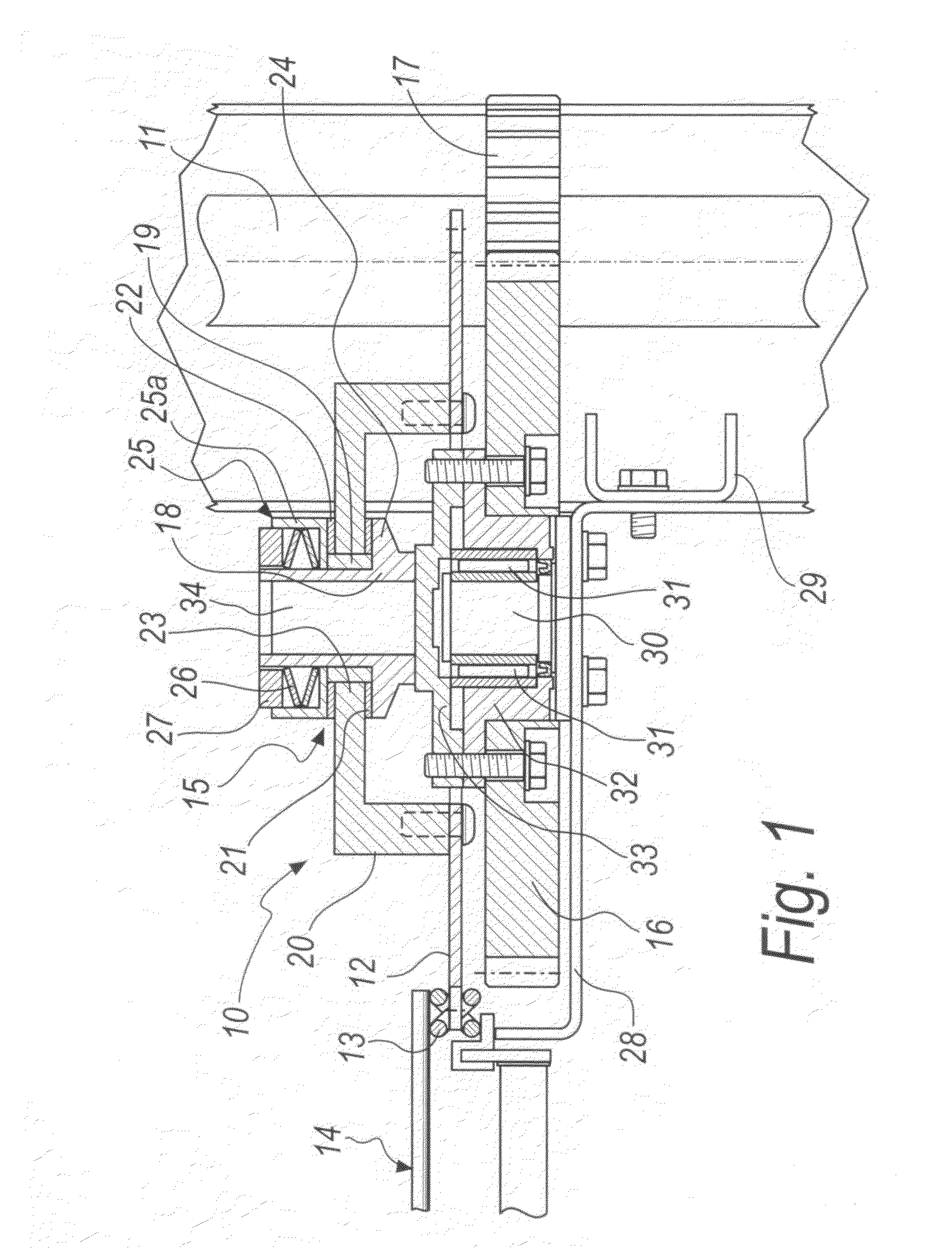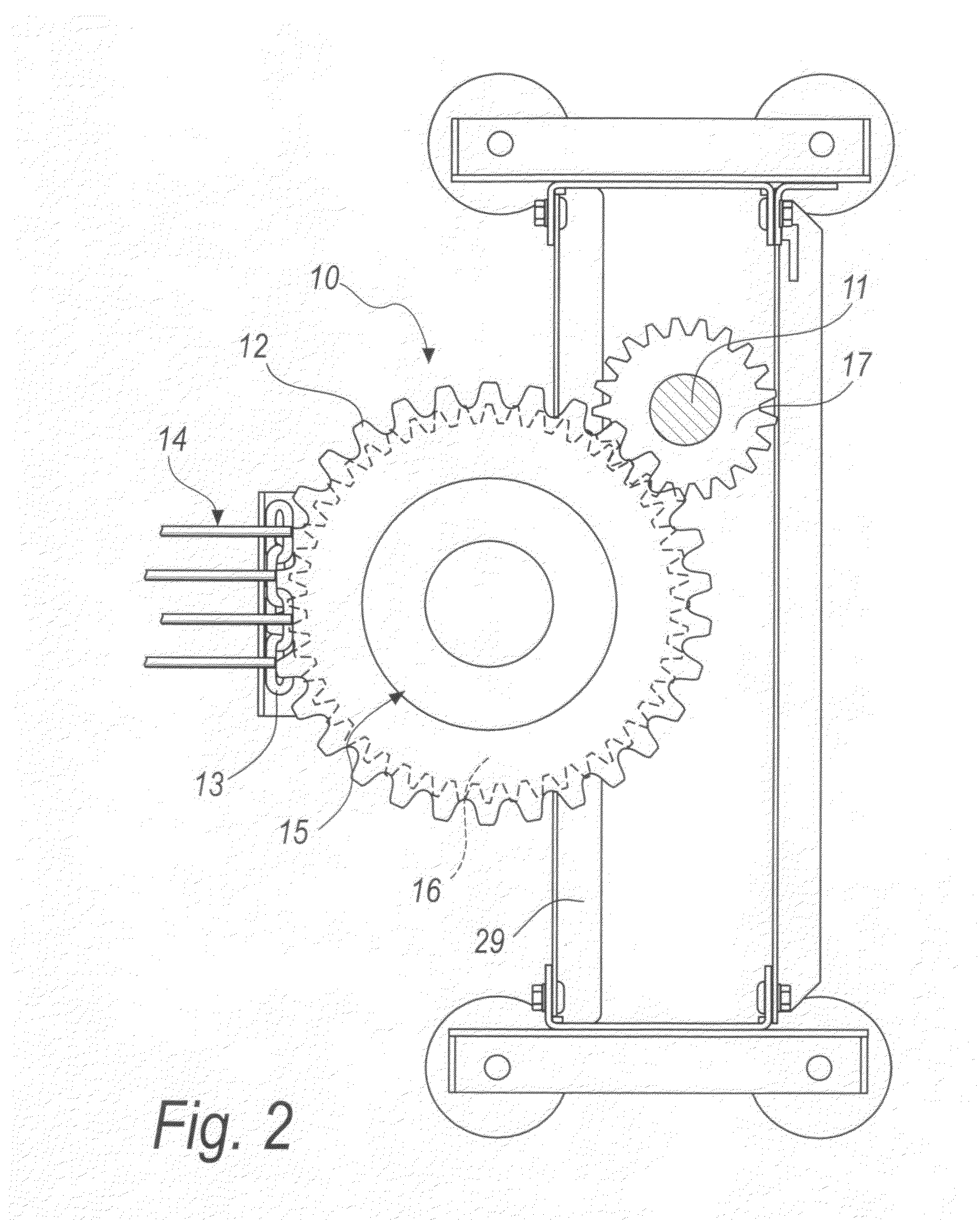Device for transmitting motion for conveyor belts
- Summary
- Abstract
- Description
- Claims
- Application Information
AI Technical Summary
Benefits of technology
Problems solved by technology
Method used
Image
Examples
first embodiment
[0033]With reference to the figures, a device for transmitting motion for conveyor belts is generally designated by the reference numeral 10 in its first embodiment, shown in FIGS. 1 and 2.
[0034]The device 10 comprises a driving shaft 11 and a driven gear 12, which is engaged with a chain 13 for driving a conveyor belt 14.
[0035]Torque limiting means 15 are interposed between the driving shaft 11 and the gear 12.
[0036]In this first embodiment of the invention, which is a non-limiting example of the invention, the torque limiting means 15 are interposed between the spur gear 16, which is engaged with a pinion 17 that is keyed to the driving shaft 11, and the driven gear 12, which is engaged with the chain 13 of the conveyor belt 14.
[0037]In this embodiment of the device 10 according to the invention, which as mentioned is a non-limiting example, the torque limiting means 15 are of the friction type.
[0038]In particular, in the embodiment described herein, the torque limiting means 15 c...
second embodiment
[0050]A second embodiment, which is also a non-limiting example of the device according to the invention, is shown in FIGS. 3 and 4 and is designated therein generally by the reference numeral 110.
[0051]The device 110 is characterized in that the torque limiting means 115 are interposed between the driving shaft 111 and the pinion 117, which is associated with the driving shaft 111.
[0052]The pinion 117, as in the first embodiment described above, is designed to turn a spur gear 116, which is firmly connected to the driven gear 112, which is engaged with a chain 113 of a conveyor belt 114.
[0053]The torque limiting means 115 are of the friction type in this example as well.
[0054]The torque limiting means 115 in particular comprise[0055]a hub 118, which is keyed onto the driving shaft 111;[0056]a sliding ring 119, which is arranged so as to surround the hub 118 and is designed to allow the relative rotation of the pinion 117, which in turn is engaged with the driven spur gear 116;[0057...
PUM
 Login to View More
Login to View More Abstract
Description
Claims
Application Information
 Login to View More
Login to View More - R&D
- Intellectual Property
- Life Sciences
- Materials
- Tech Scout
- Unparalleled Data Quality
- Higher Quality Content
- 60% Fewer Hallucinations
Browse by: Latest US Patents, China's latest patents, Technical Efficacy Thesaurus, Application Domain, Technology Topic, Popular Technical Reports.
© 2025 PatSnap. All rights reserved.Legal|Privacy policy|Modern Slavery Act Transparency Statement|Sitemap|About US| Contact US: help@patsnap.com



